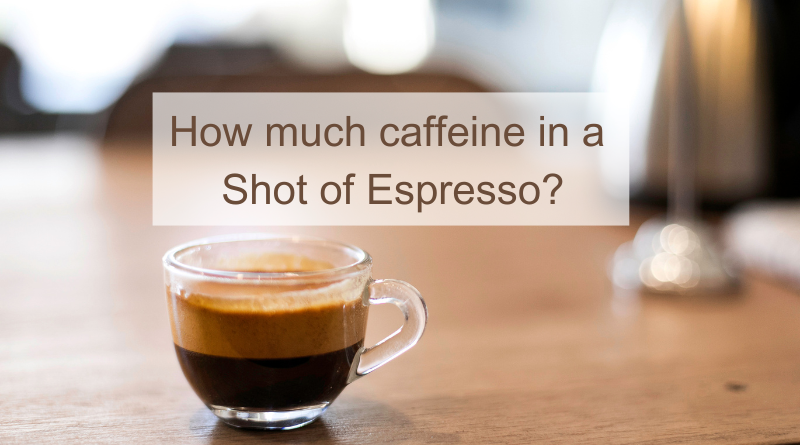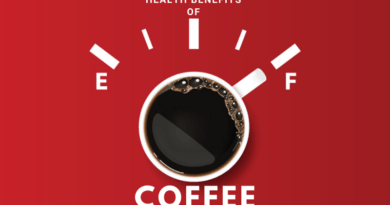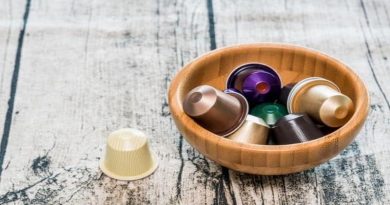How much caffeine in a shot of espresso?
Caffeine is one of the most widely consumed stimulants in the world, and espresso is one of the most popular coffee drinks out there. It’s no surprise, then, that many people are curious about how much caffeine is in a shot of espresso. Understanding the caffeine content in espresso is important for several reasons, including:
- Managing caffeine intake: If you’re trying to limit your caffeine consumption, it’s essential to know how much caffeine is in your favorite espresso drink.
- Maximizing caffeine effects: On the other hand, if you’re looking for a quick pick-me-up, knowing the caffeine content in espresso can help you choose the right drink for the job.
- Health considerations: For some people, consuming too much caffeine can lead to adverse effects, such as anxiety, insomnia, and digestive issues. Understanding the caffeine content in espresso can help you make informed decisions about your health and wellbeing.
In this article, we’ll take a closer look at the caffeine content in espresso and how it compares to other coffee drinks. We’ll also discuss how caffeine affects the body and offer tips on adjusting caffeine content in espresso-based beverages. By the end of this article, you’ll have a better understanding of the role caffeine plays in your morning espresso shot and how to make the most of it.
What is Espresso?
Espresso is a beloved coffee beverage enjoyed by millions of people around the world. In this section, we’ll delve deeper into what espresso is, where it came from, and how it’s made.

Espresso is a concentrated coffee drink made by forcing hot water through finely ground coffee beans at high pressure. This results in a small, strong shot of coffee that is typically served in a small, demitasse-style cup. Espresso is known for its rich, bold flavor an
Explanation of How Espresso is Made
To make espresso, coffee beans are first ground very finely to a consistency slightly coarser than powdered sugar. The grounds are then placed into a portafilter, which is a small, handheld device that attaches to the espresso machine. The machine heats water to just below boiling point and forces it through the portafilter and coffee grounds at a pressure of around 9 bar, resulting in a concentrated shot of espresso.
Caffeine Content in Espresso
Caffeine is a natural stimulant found in coffee that can help increase alertness and improve concentration. Espresso, in particular, is known for its high caffeine content due to its concentrated brewing method. In this section, we’ll take a closer look at the caffeine content in a shot of espresso, factors that can affect it, and how it compares to other coffee drinks.
Overview of Caffeine
Caffeine is a bitter-tasting substance found in various plants, including coffee beans. It works by blocking the action of a neurotransmitter in the brain called adenosine, which can cause drowsiness and reduce alertness. Caffeine is also found in other drinks such as tea and soft drinks.
Average Caffeine Content in a Shot of Espresso
On average, a single shot of espresso contains around 63 milligrams of caffeine. However, the actual amount can vary depending on factors such as the type of coffee bean used, the brewing method, and the serving size. Some espresso shots can contain as little as 30 milligrams of caffeine, while others can contain up to 100 milligrams or more.

Factors that Affect Caffeine Content in Espresso
Several factors can affect the caffeine content in a shot of espresso. The type of coffee bean used can play a significant role, as some beans naturally contain more caffeine than others. The roast level can also affect caffeine content, with darker roasts generally having less caffeine than lighter roasts.
The brewing method can also impact caffeine content. Espresso machines that use higher pressure and temperature tend to extract more caffeine from the coffee grounds. Additionally, the serving size can affect caffeine content, as a double shot of espresso will naturally contain more caffeine than a single shot.
Comparison of Caffeine Content in Espresso to Other Coffee Drinks
| Coffee Drink | Serving Size | Average Caffeine Content | Average Calories |
|---|---|---|---|
| Espresso | 1 shot (1.5 oz) | 63 mg | 3 |
| Drip Coffee | 12 oz | 95-200 mg | 5 |
| Latte | 12 oz | 63 mg (single shot) | 120-220 |
| Cappuccino | 12 oz | 63 mg (single shot) | 80-120 |
| Americano | 12 oz | 63 mg (single shot) | 5 |
| Cold Brew Coffee | 12 oz | 150-200 mg | 5 |
| Iced Coffee | 12 oz | 95-165 mg | 5 |
| Mocha | 12 oz | 63 mg (single shot) | 290-450 |
Please note that the calorie content in these drinks can vary depending on several factors, such as the type of milk used and the addition of syrups or whipped cream. The values listed in the table are meant to provide a general idea of the calorie content in each drink.
Measuring Caffeine in Espresso
Caffeine is a naturally occurring stimulant that is present in coffee and many other beverages. For coffee lovers who are concerned about their caffeine intake, it is important to know the caffeine content of their favorite drinks. Espresso, a concentrated form of coffee, is known for its high caffeine content. In this section, we will discuss the process of measuring caffeine in espresso and the different methods used to determine its caffeine content.
Process for measuring caffeine in espresso
Measuring caffeine in espresso is a complex process that involves specialized equipment and techniques. The basic process involves extracting the caffeine from the espresso and then measuring its concentration. This can be done using various methods, which we will discuss in the next section.
Explanation of the different methods for measuring caffeine content
There are several methods for measuring caffeine content in espresso. The most common methods are:
High-performance liquid chromatography (HPLC)
This method involves separating the caffeine molecules from the other compounds in the espresso using a chromatography column. The caffeine is then measured using a detector, and its concentration is calculated.
Gas chromatography-mass spectrometry (GC-MS)
This method involves vaporizing the espresso and then analyzing the resulting gas using a mass spectrometer. The caffeine molecules are identified based on their mass-to-charge ratio, and their concentration is calculated.
Near-infrared spectroscopy (NIRS)
This method involves shining near-infrared light through the espresso and measuring the absorption of the light by the caffeine molecules. The caffeine concentration is calculated based on the degree of absorption.
Advantages and disadvantages of each method
Each method for measuring caffeine in espresso has its own advantages and disadvantages. HPLC is considered the gold standard for caffeine analysis, as it provides accurate and precise measurements. However, it is a relatively expensive and time-consuming method. GC-MS is a highly sensitive method that can detect very low levels of caffeine, but it requires specialized equipment and expertise. NIRS is a non-invasive and relatively simple method that can provide rapid results, but it is less accurate than the other two methods and is more prone to errors.
Understanding the Effects of Caffeine
Caffeine is a stimulant that is found in many foods and beverages, including coffee, tea, chocolate, and energy drinks. It is one of the most widely consumed psychoactive substances in the world. In this section, we will explore how caffeine works in the body, the benefits and drawbacks of its consumption, and how much caffeine is safe to consume.
Explanation of how caffeine works in the body
Caffeine works by blocking the action of adenosine, a neurotransmitter that promotes sleep and suppresses arousal. By blocking adenosine, caffeine increases the levels of other neurotransmitters, such as dopamine and norepinephrine, which promote wakefulness and alertness. This is why caffeine is known for its ability to help people stay awake and focused.
Benefits and drawbacks of caffeine consumption
Caffeine has several potential benefits, including:
Increased alertness and focus: Caffeine can help improve cognitive performance and reduce fatigue.
Improved physical performance: Caffeine has been shown to enhance endurance and reduce perceived exertion during exercise.
Enhanced mood: Caffeine can improve mood and reduce the risk of depression.
However, caffeine also has several potential drawbacks, including:
Increased heart rate and blood pressure: Caffeine can cause a temporary increase in heart rate and blood pressure, which can be problematic for individuals with pre-existing cardiovascular conditions.
Insomnia: Caffeine can interfere with sleep, making it difficult to fall asleep or stay asleep.
Anxiety and jitteriness: Caffeine can cause feelings of anxiety and nervousness, especially at high doses.
How much caffeine is safe to consume
The amount of caffeine that is safe to consume varies depending on the individual and their sensitivity to caffeine. However, the general guideline is that adults can safely consume up to 400 milligrams of caffeine per day, which is roughly equivalent to four cups of coffee. Pregnant women and individuals with certain health conditions may need to consume less caffeine or avoid it altogether. It is also important to be aware of the caffeine content of different foods and beverages, as some can contain much higher levels of caffeine than others.
Final Thoughts
In this article, we have explored the caffeine content in a shot of espresso, how it is measured, and how it compares to other coffee drinks. We have also discussed the benefits and drawbacks of caffeine consumption, as well as the safe amount of caffeine to consume.
It is important to remember that caffeine affects individuals differently, and what works for one person may not work for another. It is always a good idea to be aware of the caffeine content in the foods and beverages we consume, and to consume caffeine in moderation.
For coffee lovers, understanding the caffeine content in their favorite drinks can help them make informed choices about their caffeine intake. Whether it’s a shot of espresso, a latte, or a cup of drip coffee, knowing the caffeine content can help individuals enjoy their coffee without overdoing it.
Overall, we hope this article has provided valuable information on the caffeine content in espresso and the effects of caffeine on the body. By understanding the science behind caffeine and its potential benefits and drawbacks, individuals can make informed decisions about their caffeine intake and enjoy their coffee in a safe and healthy way.




